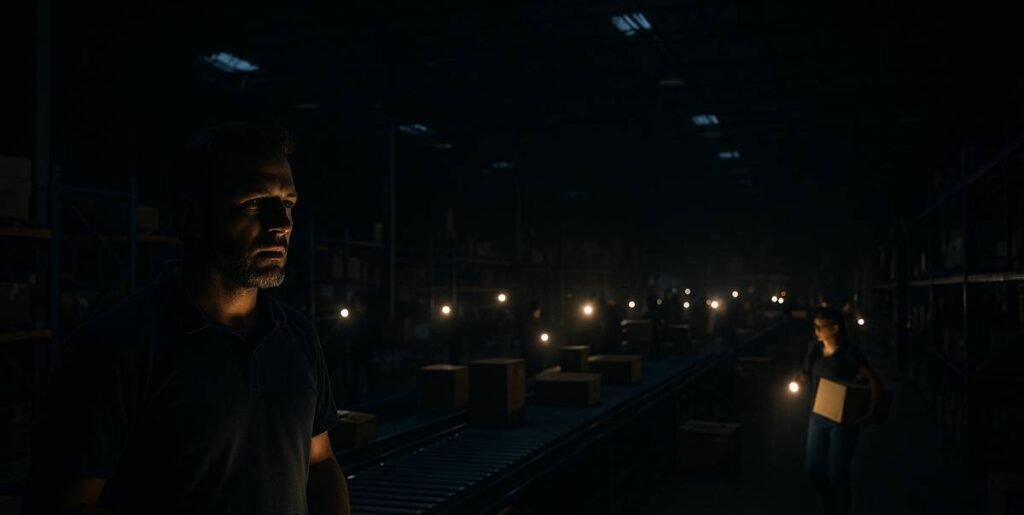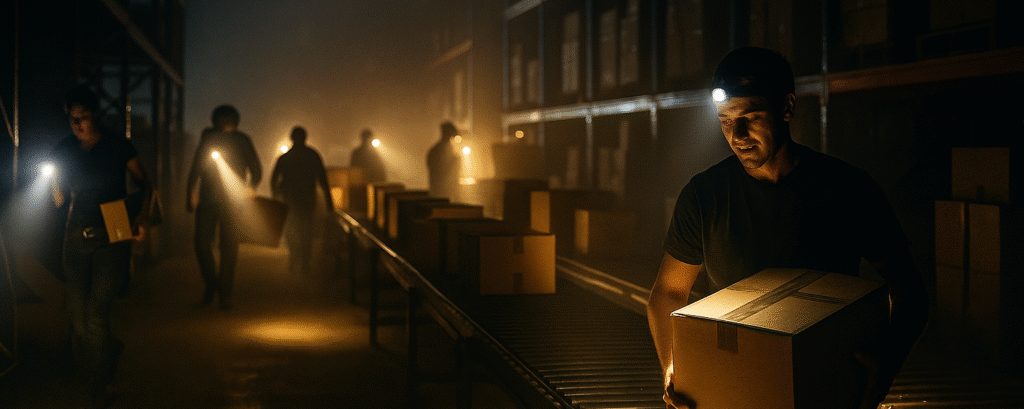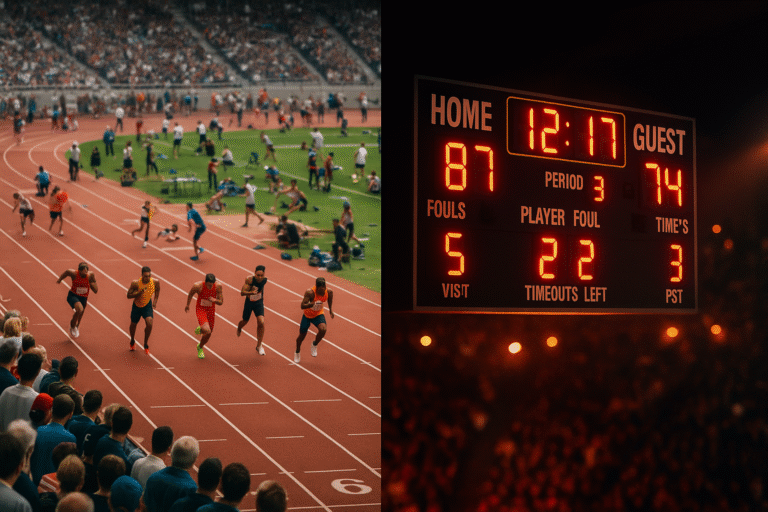The Night the Warehouse Went Dark
My first role as a Director came unexpectedly for most — but exactly as I’d planned for myself.
I was the West Coast Engineering Manager, responsible for every project across the western U.S. But within a few months, I realized my greatest value wasn’t in spreadsheets or conference calls — it was right here, in my home building, shoulder to shoulder with the team who made everything happen.

Most mornings, I’d pass the second-shift Operations Manager on his way out. Not graveyard, but that tough 2 p.m. to 11 p.m. shift — the one that makes or breaks an e-commerce operation.
Our promise was simple: orders placed before 5 p.m. would be delivered the next day.
That meant every order from the previous evening until 5 p.m. today had to ship — no excuses.
And if we missed even one, not only did we disappoint a customer, but we paid for it — literally.
Our hubs were located across the West, in Salt Lake City, Phoenix, Los Angeles, and San Diego. Each had a cutoff time: 8:00 p.m., 10:00 p.m., 11:00 p.m. Every night was a race against the clock. Orders flowed like a river across the conveyors, and every decision — whether to push productivity or chase priority — felt like threading a needle at full speed.
We used to joke that it was like living the same nightmare every day — a dance between chaos and control.
After months of 18-hour days, something finally clicked.
The firefight became a rhythm.
The chaos turned into choreography.
We were doing it — quietly, efficiently, without recognition, but damn it, we were doing it right.
Then one summer evening, around 6 p.m., the lights went out.

Total. Power. Lost.
Conveyors dead. Forklifts silent. Just the faint glow of daylight through the skylights.
The team gathered in the break room, waiting for Edison to call back with an update.
6:00 turned into 7:00. Someone asked if we should just close up and try again tomorrow. I didn’t know what to say. I was bouncing between the power company, our command center in Boston, and a growing sense of defeat.
When I finally walked back to check on everyone, half the breakroom was empty.
“Did we send people home?” I asked.
Someone shook their head. “No… they went back to work.”

Back to work? With no power?
I started walking the floor, and as I stepped into the pick module, I heard something — movement, voices, laughter echoing faintly in the dark.
Then I saw it.
A line of people — carrying boxes down the stairs, flashlights in hand, running orders to shipping.
I climbed to the third-level mezzanine and stopped cold.
Associates were manually pulling orders off conveyors, checking pick tickets by flashlight, and searching for missing items.
Air pillows stretched across the deck like improvised supply lines.
Tape guns clicked and snapped in the half-light.
They were packing boxes by hand, labeling them, carrying them down the stairs — no automation, no direction, no supervisor telling them what to do.
Just people.
Doing what needed to be done.
We didn’t ship every order that night. Eventually, it got too dark to continue.
But it didn’t matter.
That night, I saw something I’ll never forget — people who refused to quit, even when everything went black.
And I am grateful to this day for their efforts and education they provided.
I’ve never shared this story with anyone. It makes me emotional just reliving that experience on paper.
But that night, life quietly paid me back; For every hour I’d sacrificed….., every dinner I’d missed….., every moment I wondered if it was worth it.
Because it was.
I built that.
Not with money. Not with praise.
But with faith — in myself, and in them.
And when the lights went out…
We didn’t need power to shine.






